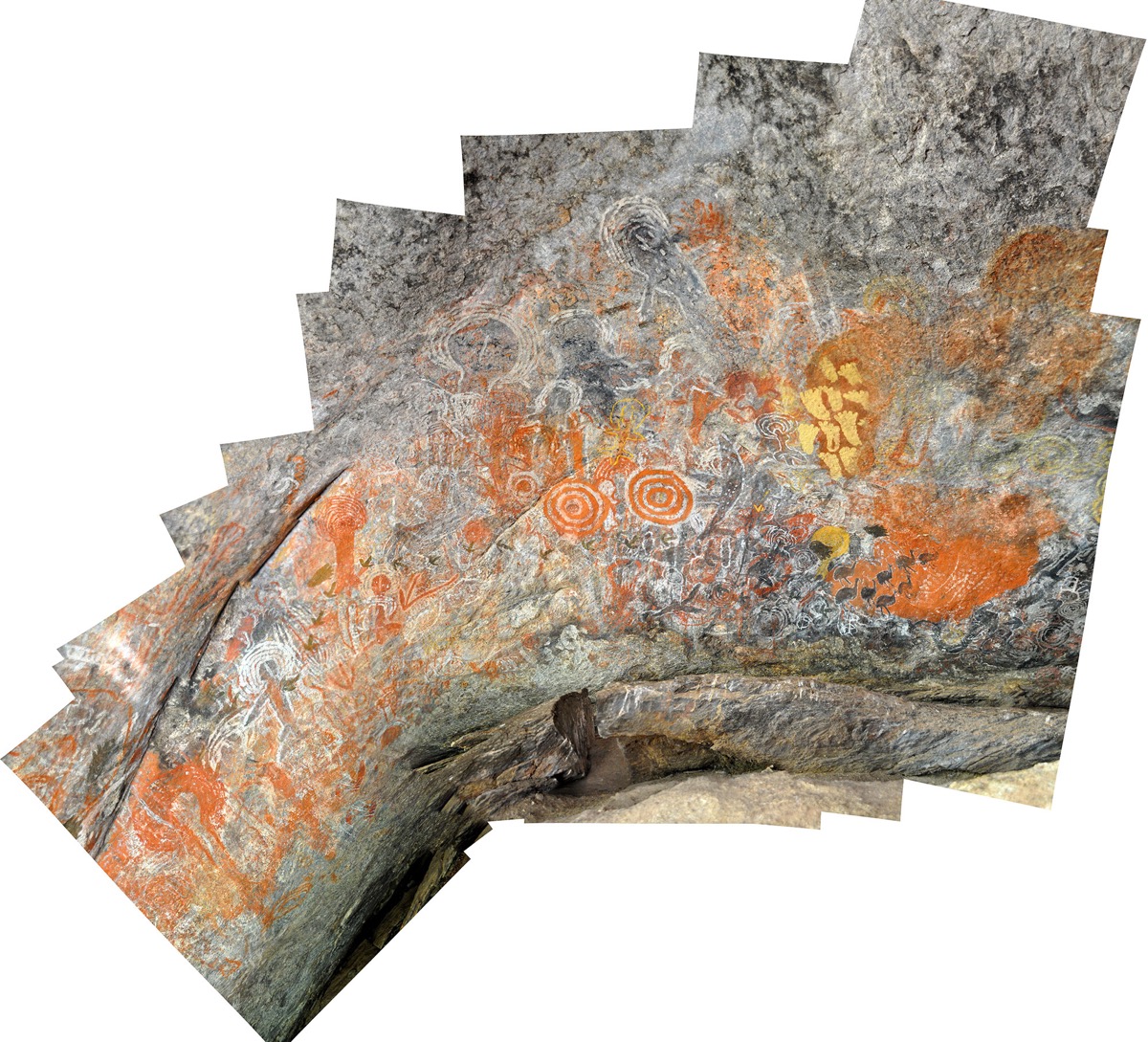
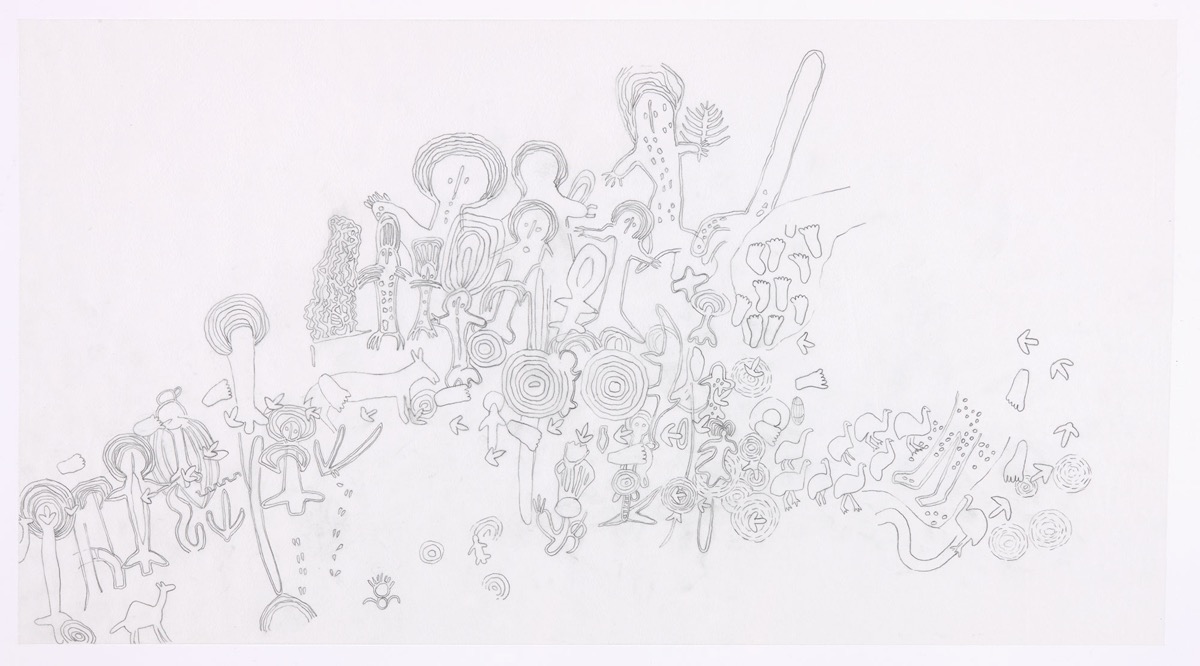
Rock art panel
This rock art panel contains more than 200 motifs. Stylistic changes and the layering of the paintings suggest that they were painted in at least three broad painting phases. Changes in social, political, economic and religious life are often marked by changes in visual expression such as found in this cave. Although the Walinynga rock art is yet to be radiocarbon dated, some of the layers are likely to be at least 3000 years old and may have much earlier origins. Photo: Kimberlee Newman, University of New England, assembled by Paul Bourke
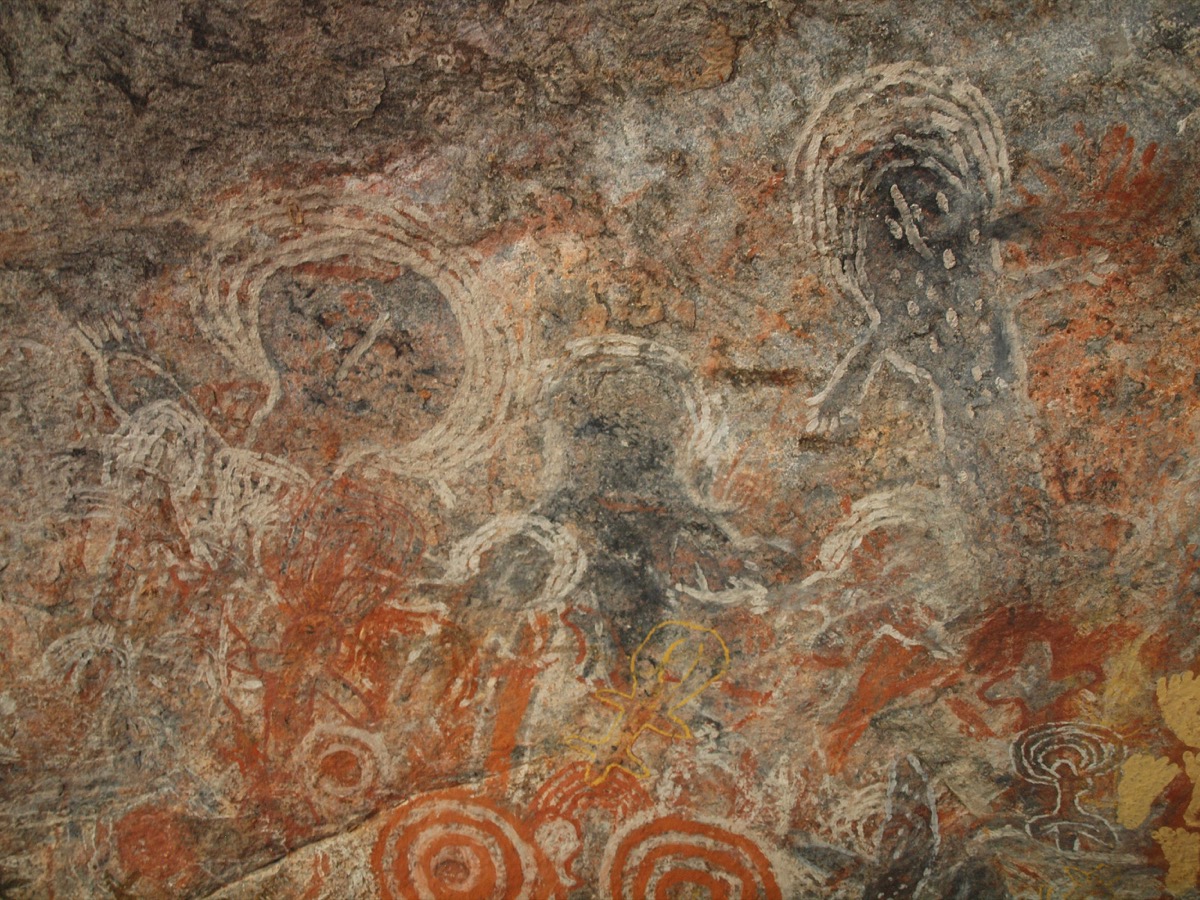
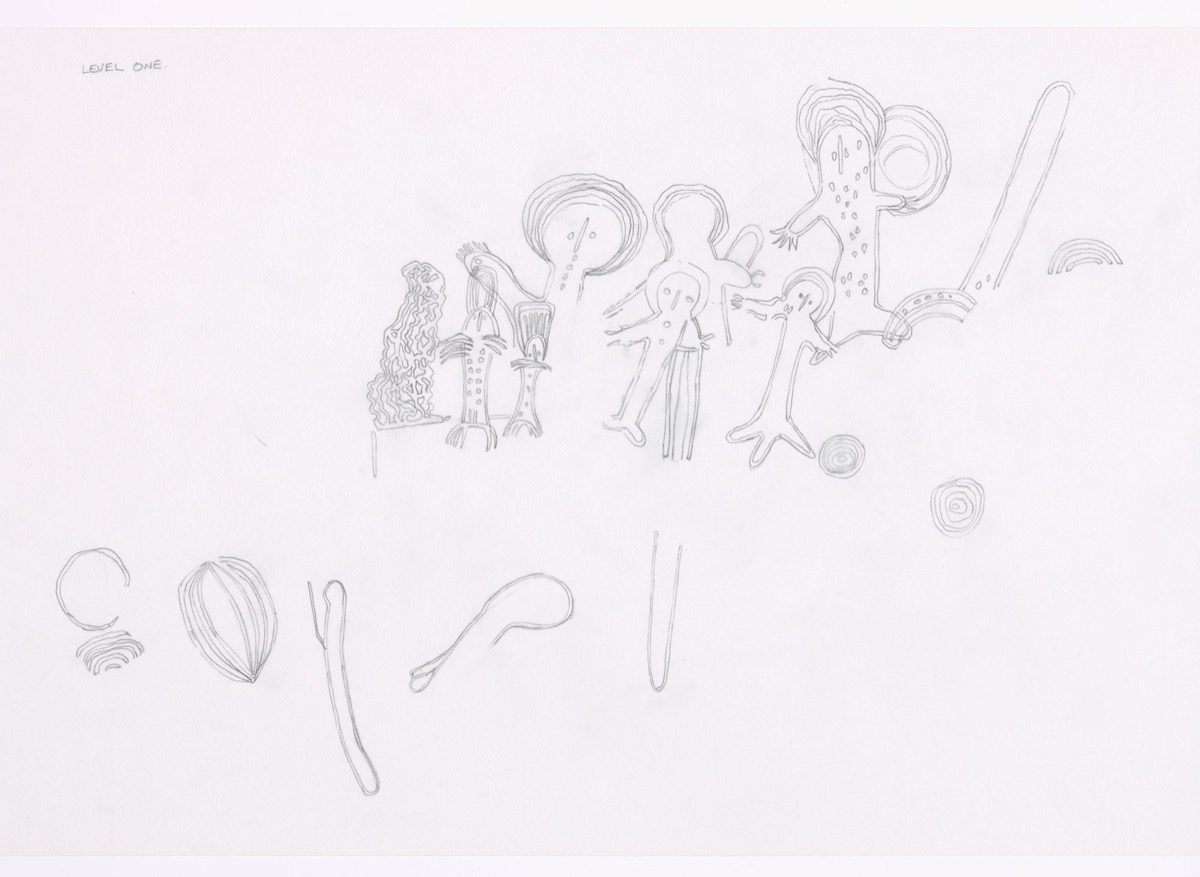
Walinynga figures
The oldest paintings have recently been called ‘Walinynga figures’ since this particular style of figure has only been encountered in this rock art shelter. Walinynga figures have elongated bodies and large rounded heads encircled with headdresses. They have eyes and noses but no mouths. Most are painted with white outline and black infill. Photo: June Ross, University of New England
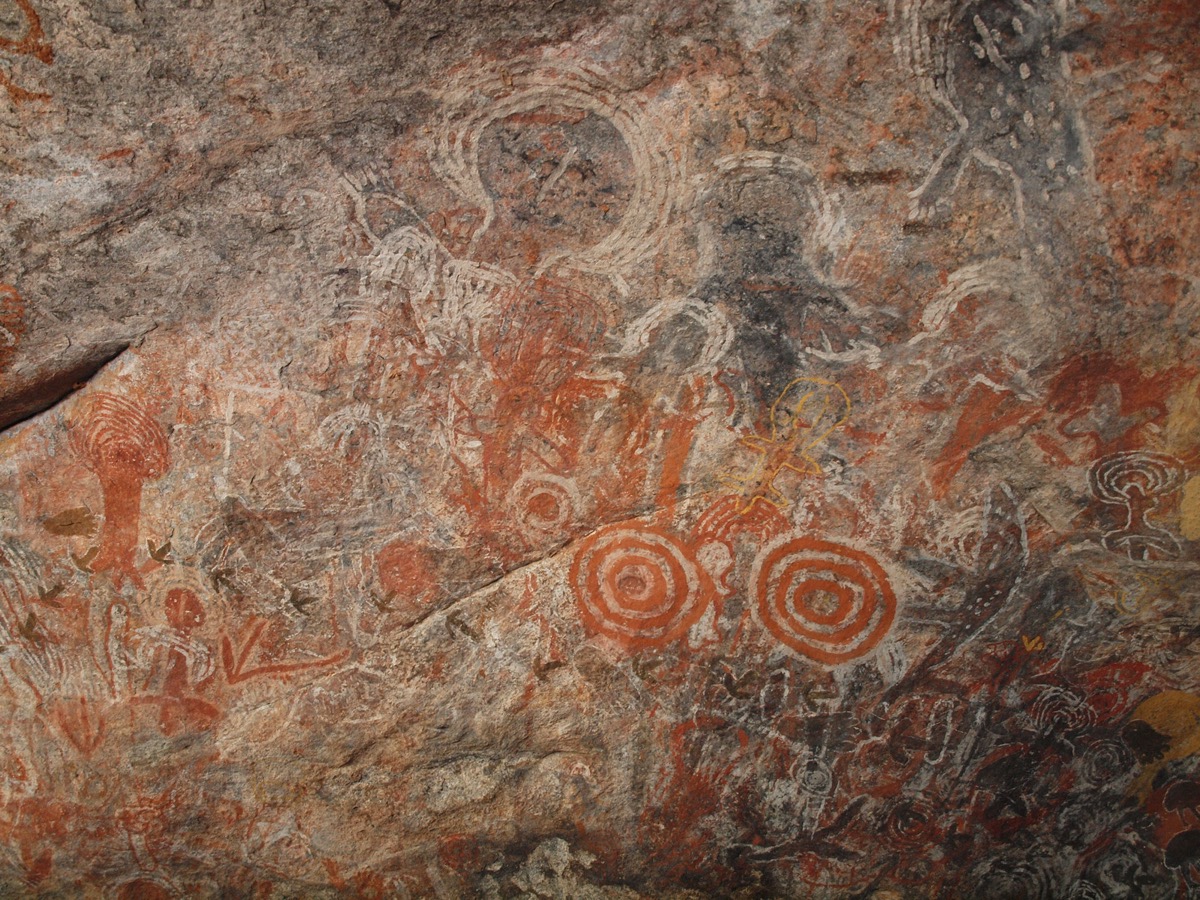
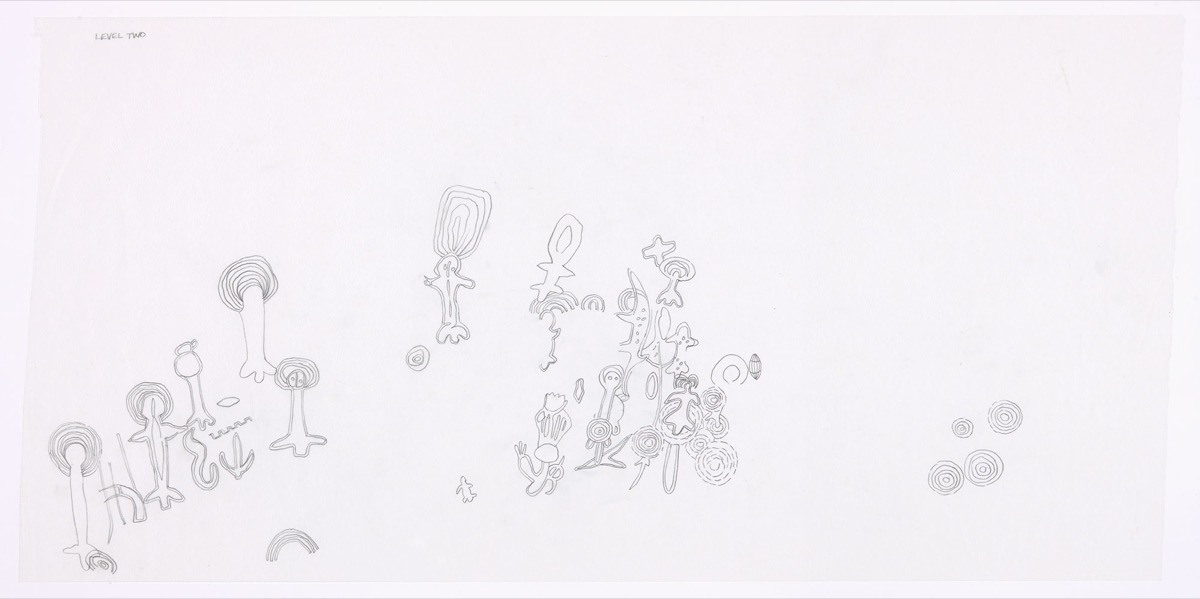
Humans, animals and other motifs
Unlike the older Walinynga figures, these anthropomorphic (human) figure motifs rarely have facial features. Similar figures are found at other desert sites such as Uḻuru and Watarrka. Concentric circles, trails of animal tracks and animal motifs recorded at Walinynga are common throughout the desert. Photo: Kimberlee Newman, University of New England
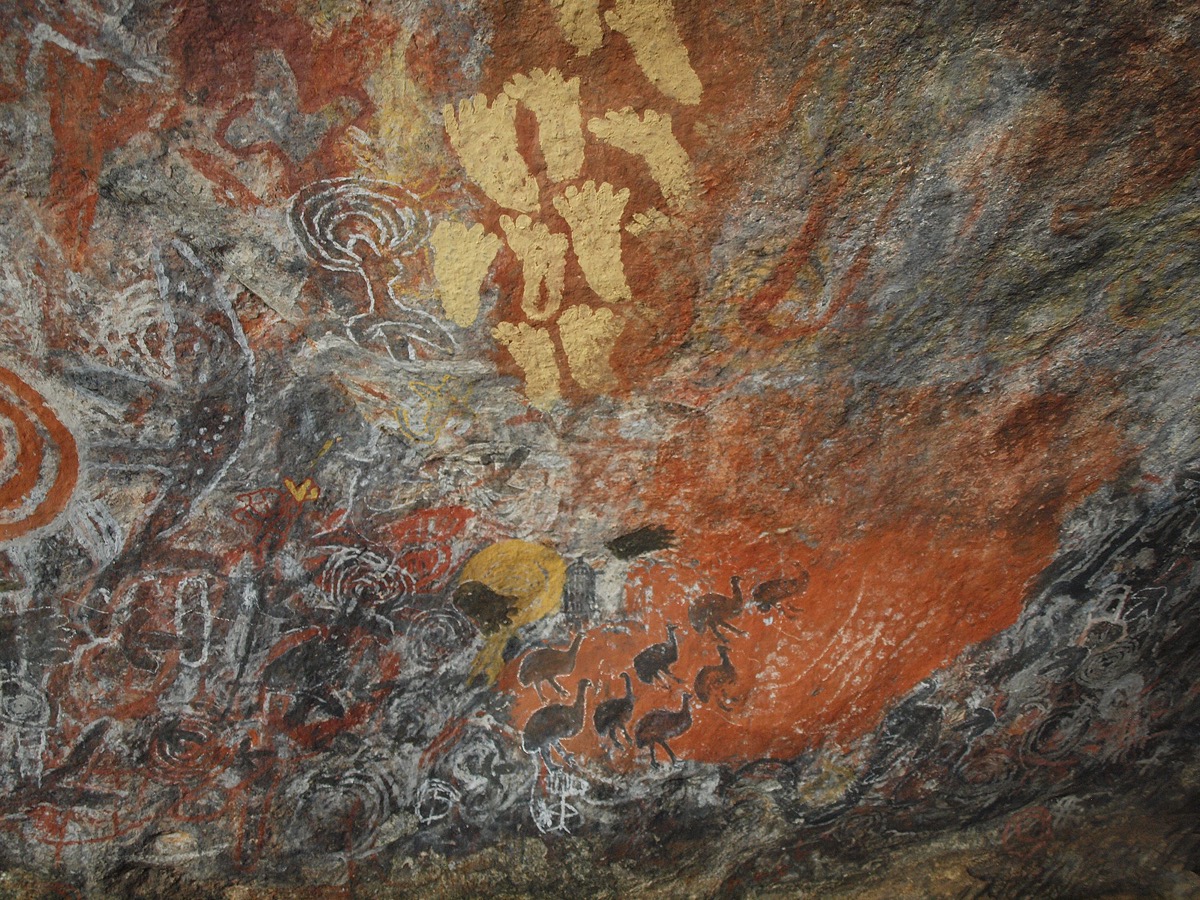
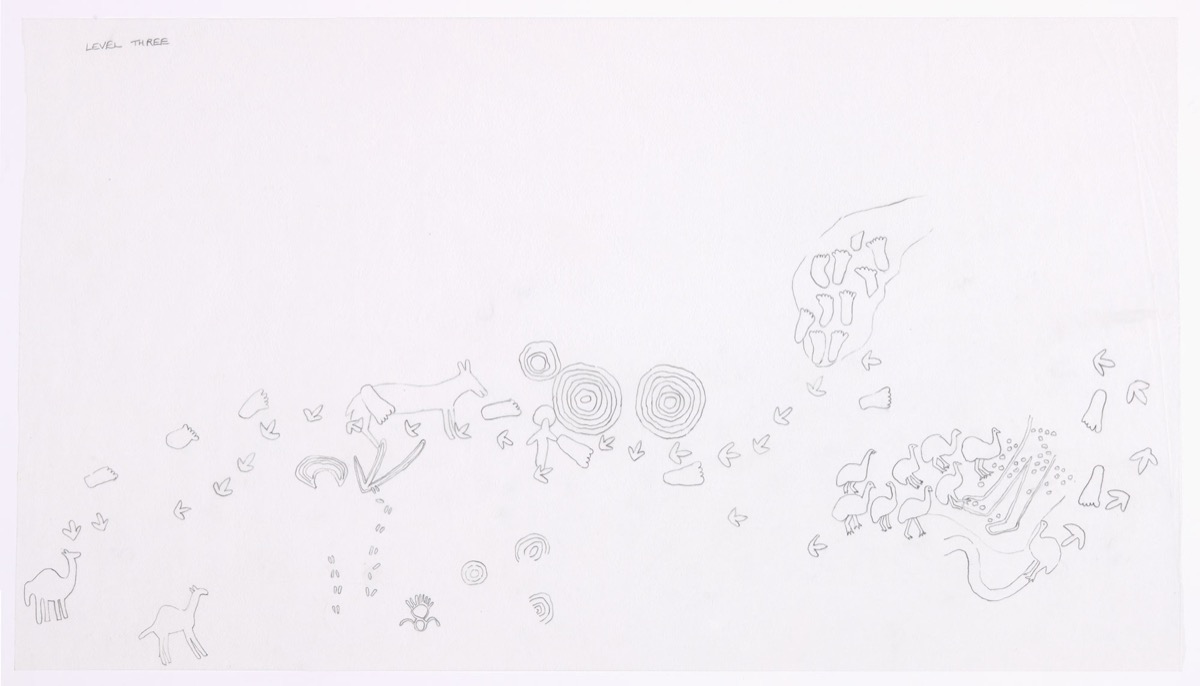
Figurative and contact art
The most recent layer demonstrates a move to a more naturalistic style, as well as incorporating motifs clearly identifiable as contact art. Can you find them? Within Indigenous cultures, adding a new painting layer is perceived as caring for the site, and not as an act of disrespect to earlier artists. The act of painting is just as important as the image and ensures the ongoing potency of the site. Photo: June Ross, University of New England